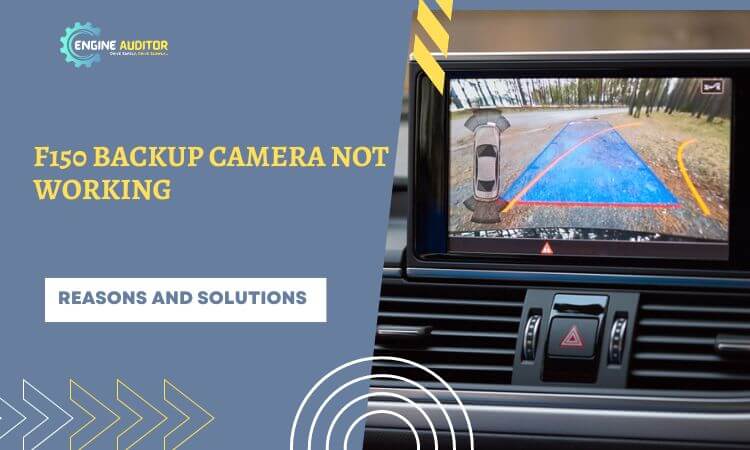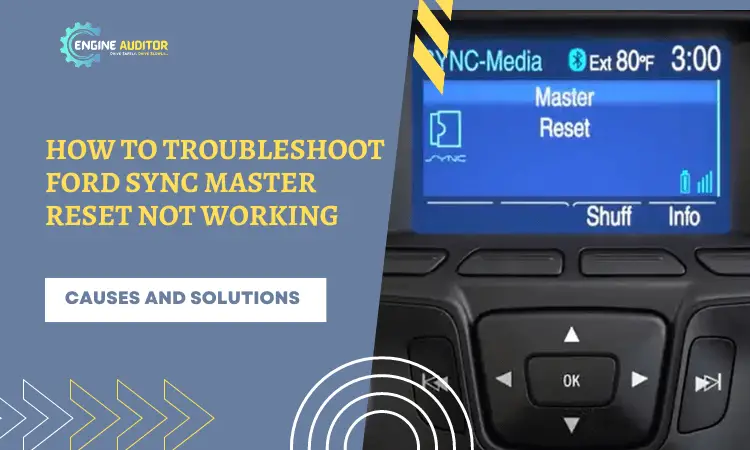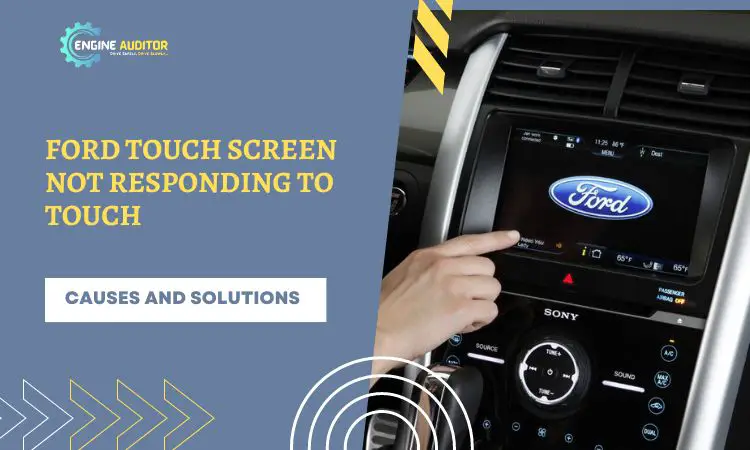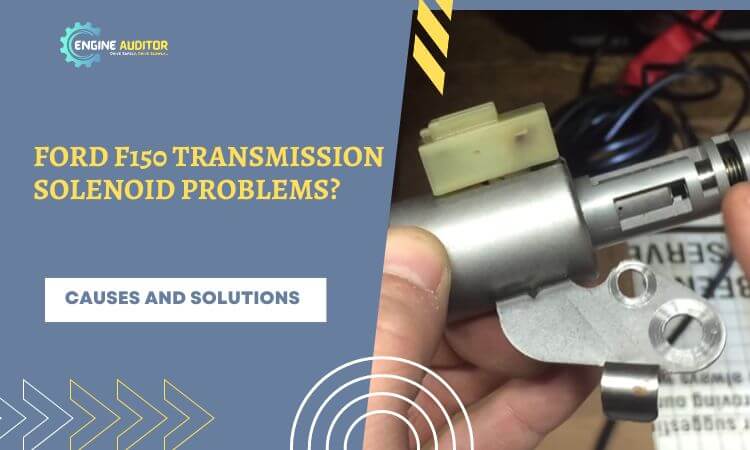Hey there! This post contains affiliate links to products. We may receive a commission for purchases made through these links. But it never influences our product selection process.
Traction control stands as an essential component for a vehicle’s safety. Ford vehicles work with the ABS to ensure safe and stable driving. If a tire slip is detected during acceleration, it ensures control to prevent accidents. However, you may need help from time to time. The problems must be resolved to ensure safe driving. However, how to fix Ford Traction Control issues is a puzzle to me.
- Check for the wheel speed sensor and ABS control module. Ensure both are okay.
- Then check for the traction control switch, and repair or replace it if faulty.
- Check the brake fluid level; if it is low, refill it.
- Lastly, inspect the steering angle sensor and ensure it is okay.
In this guide, I will explore major traction control problems and help you to identify and fix them. After reading this, you can fix the issue and confidently hit the road.
How Does Traction Control Work in Ford Vehicles?
Ford vehicles are equipped with modern technological features. Ford traction control system works on advanced patterns to ensure safety standards.
However, here is the detailed traction control process in Ford vehicles to know how it works to ensure your safety while the wheel slips.
Sensing Wheel Slip:
First, the traction control systems sensors monitor individual wheel speeds. If one or more wheels start to slip due to loss of traction, the system is activated.
Analyzing Data:
The computer system in Ford continuously analyzes the data sent by the sensors. It compares the rotational speed of each wheel to detect the difference. If there is a speed difference, it indicates wheel slip.
Applying Brakes:
The following instant, it applies the brake to the particular wheel on which wheel slip is detected, allowing it to maintain speed while preventing slip. Reducing the rotation speed of the slipping wheel helps regain traction and maintain vehicle stability.
Engine Power Management:
The system not only depends on the brake system but also sends signals to the engine to reduce power and prevent excessive wheel speed. It can temporarily reduce engine power to limit wheel slip and improve traction.
Monitoring and Adjusting:
The traction control system continuously monitors wheel speeds and adjusts braking and power management. It works until the system gets back to its normal position.
Do your driver-side door controls have problems? Let’s explore common issues and find effective solutions for a smooth operation.
Symptoms For Ford Traction Control Problems
Here is a list of a few common symptoms you may experience when you have an issue with your Ford traction control system. If you notice any of the below symptoms, you must check the system to eliminate the issue.
- Difficulty in maintaining traction while driving on slippery surfaces
- Excessive wheel spin is also a common symptom when you are driving under normal conditions
- You push the accelerator but cannot achieve the targeted speed
- The brakes pulsate or vibrate when the traction control system engages.
- The engine will stall or surge, especially during acceleration or deceleration.
- The anti-lock braking system (ABS) may engage without activating
- The vehicle requires a longer distance to come to a complete stop
Common Causes For Ford Traction Control Problems:
There can be various reasons why you experience traction control issues in Ford vehicles. However, I have listed the 5 common causes that can cause such issues mostly. You must check for the following reasons whenever you have Ford traction control problems.
- Wheel Speed Sensor Malfunction
- Faulty ABS Control Module
- Faulty Traction Control Switch
- Low Brake Fluid Level
- Malfunctioning Steering Angle Sensor
If you have issues with your brake controller, you must read this article: Brake controller not working with pedal.
How To Fix Ford Traction Control System [Problems and Solution]
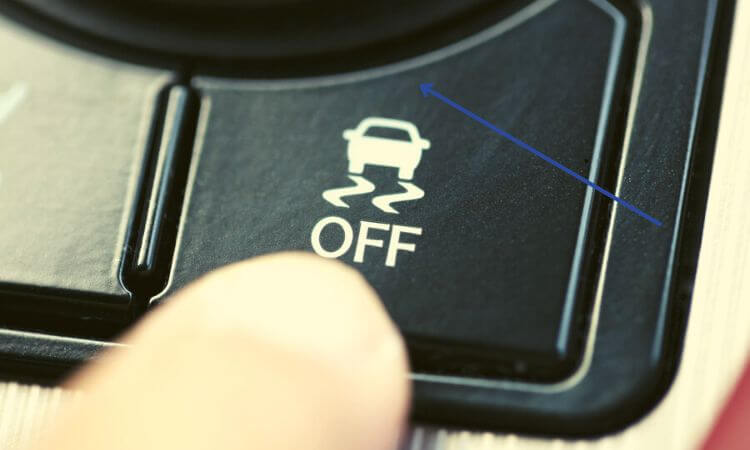
Problem 1: Wheel Speed Sensor Malfunction
When the wheel speed sensor fails to accurately measure the speed of a Ford vehicle’s wheels, it can disrupt the traction control system. The failure of the sensor may be the culprit for traction control problems. You have to check the wheel speed sensors to resolve the issue.
Solution:
- Locate the wheel speed sensor on the wheel hub or the brake assembly.
- Jack up the affected wheel and secure the vehicle on jack stands.
- Remove the wheel and brake assembly to access the sensor.
- Disconnect the electrical connector attached to the sensor.
- Check the sensors for damage or debris.
- Clean the sensor and the mounting area using a brake cleaner or similar solvent. I recommend Cyclo – Brake & Parts Clean Nonchlorinated for sensor cleaning.
- But if the sensor is damaged, replace the sensor. But ensure replaced with the same sensor.
- Install the new sensor and reconnect the electrical connector.
- Reinstall the brake assembly and wheel.
- Lower your vehicle from the jack stands and test the traction control system to ensure the issue is resolved.
Problem 2: Faulty ABS Control Module
The ABS control module regulates the anti-lock braking system. If it malfunctions in a Ford vehicle, it can affect the traction control system. You may experience issues with maintaining traction and stability during acceleration or braking.
Solution:
- Start by locating the ABS control module near the brake master cylinder or engine compartment.
- Disconnect the battery to ensure safety.
- Then, remove the electrical connections and mounting bolts securing the ABS control module.
- Carefully remove the module
- Inspect the module for corrosion or burnt components.
- If the module is faulty, you can either replace it with a new one or have it repaired by a reputable automotive electronics repair service. But the new one is better; Cardone 12-10212 Remanufactured ABS Control Module can be perfect for your Ford.
- Install the repaired or new ABS control module back into its original position.
- Reconnect the electrical connections and securely tighten the mounting bolts.
- Reconnect the negative terminal of the battery.
- Test the vehicle’s traction control system to ensure it is functioning correctly.
Problem 3: Faulty Traction Control Switch
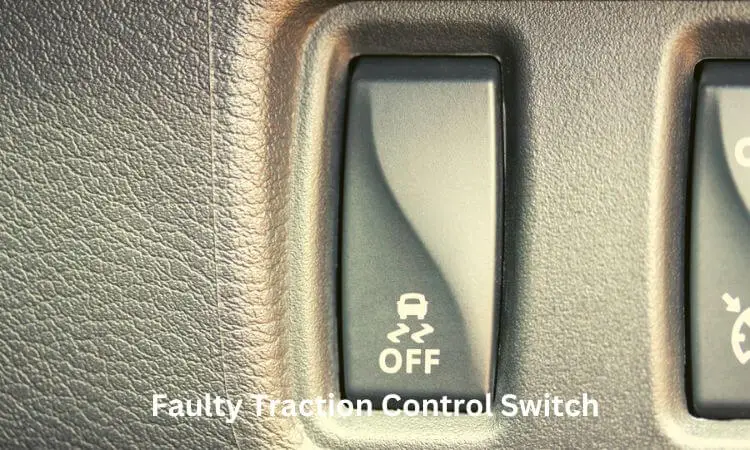
When the traction control switch in a Ford vehicle becomes faulty, it can prevent the proper engagement or disengagement of the traction control system. It can result in traction control problems and difficulties maintaining vehicle stability.
Solution:
- Locate the traction control switch under the dashboard or center console.
- Once you have located it, disconnect the vehicle’s battery
- Use a screwdriver or a panel removal tool to carefully remove the panel or cover that houses the traction control switch.
- Inspect the switch for loose connections, broken wires, or burnt components.
- If there are visible issues, repair or replace the faulty parts accordingly.
- If no visible issues are present, test the switch’s functionality using a multimeter. I recommend Klein Tools MM400 Multimeter for perfect and accurate readings.
- If the switch fails the multimeter test, replace it with a new one. Ensure compatibility with your Ford vehicle’s make and model.
- Once the traction control switch is replaced, reassemble the parts and reconnect the battery.
- Test the traction control system to verify that the switch works correctly.
Problem 4: Low Brake Fluid Level
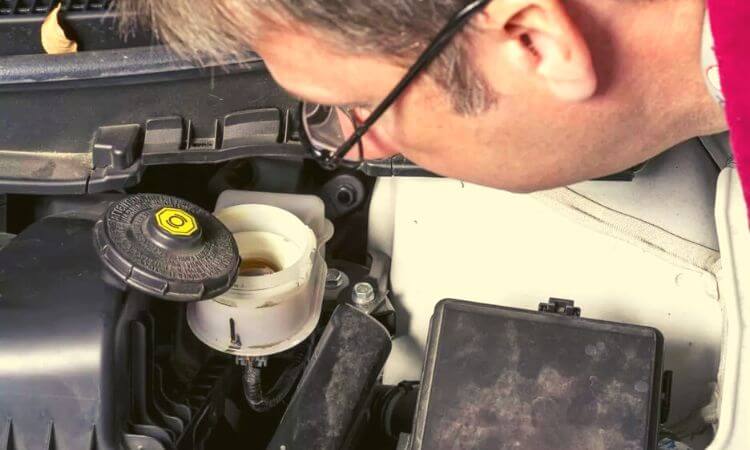
Insufficient brake fluid in a Ford vehicle can affect the operation of the traction control system. Low brake fluid levels may trigger the system to deactivate or malfunction. If it happens, it may lead to traction control problems and potential safety concerns.
Solution:
- Check for the brake fluid level using a manual gauge
- Compare the level with the manufacturer’s recommendations
- Ensure the brake fluid level is up to the recommended level; if it is low, you must refill the brake fluid to the recommended level
- However, before refilling, check the brake fluid and ensure it is clean. If it is dirty, drain the brake fluid and then fill it with any good quality brake fluid.
- Once refilled, leave the ford vehicle for 30 minutes, and after that, check and ensure the traction control system is okay.
If you have time, I recommend visiting this link for a comprehensive solution to the Ford integrated trailer brake controller. It will provide detailed instructions and troubleshooting steps.
Problem 5: Malfunctioning Steering Angle Sensor
If the steering angle sensor in a Ford vehicle malfunctions, it can provide inaccurate data about the steering wheel’s position. It may also impact the functioning of the traction control system, causing problems with traction and stability while driving.
Solution:
- Park the Ford vehicle on a level surface
- Turn off the engine
- Locate the steering angle sensor; it is usually installed on the steering column or steering rack in Ford vehicles.
- Check the steering angle sensor for damage or lose connections.
- If you see the connections are loose, tighten them. But if the sensor is damaged, replace it.
- However, make sure the sensor is defective before replacing it. Use a diagnostic tool to scan for error codes related to the steering angle sensor.
- If error codes are found, you have an issue with the sensor replacing it.
- Once replaced, clear the error codes and retest the vehicle to ensure the traction control problem has been removed.
To resolve Dodge Ram trailer brake controller issues on a 2012 model, please refer to the specific instructions and troubleshooting steps provided at this link.
How To Reset The Traction Control Light?
To reset the traction control light, follow these steps:
- Park your vehicle on a safe but flat surface.
- Then switch off the engine and remove the key from the ignition switch
- Locate the fuse box under the dashboard, or you can look for it in the engine compartment.
- Now, open the fuse box and find the fuse labeled “Traction Control” or “TC.”
- Remove the fuse for at least 30 seconds to 1 minute, and then reinsert it.
- Switch on the engine and check the traction control light has been reset.
Frequently Asked Questions (FAQs):
Does Ford traction control affect the engine?
No, it does not directly affect the engine. Traction control helps to maintain vehicle stability by managing wheel slip during acceleration. It primarily uses the braking system to reduce wheel spin. But it does not directly impact the engine’s operation or performance.
Is it OK to drive without Ford traction control?
Yes, there is no issue, but having a Ford traction control system ensures safety. It gives better control while accelerating, especially in slippery conditions. Without it, you may experience reduced control and an increased risk of skidding or spinning out.
What is traction control light off meaning?
The traction control light off means the system in a vehicle has been deactivated or turned off. It also means that the vehicle’s wheels may have reduced stability and may be more prone to slipping or losing traction.
What when Ford traction control fails?
When Ford traction control fails, it can negatively impact acceleration by causing wheelspin. It may also reduce speed as the system won’t effectively manage power distribution and braking for optimal traction.
Conclusion
Ford traction control system is an advanced safety system in Ford vehicles. It always ensures safety when needing help and may experience problems when using it.
No, worry; you can solve it by properly diagnosing the cause. Once you have found the cause of the problem, you can fix it accordingly.
If you are facing an issue to fix, consult an expert or call a professional to solve it and ensure safe driving.

